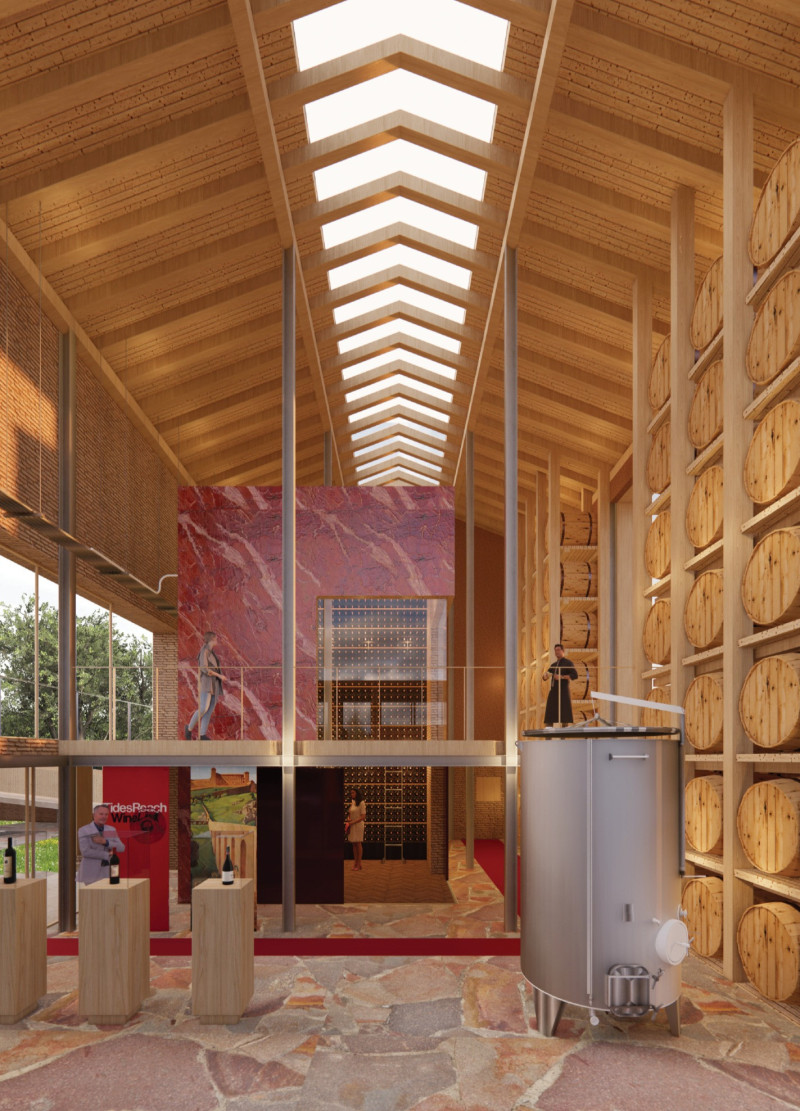5 key facts about this project
The Tili Vini Guest House is located in a scenic vineyard area, designed to immerse visitors in the local wine culture. The building serves dual purposes as a place for guests to stay and a venue for cultural activities related to winemaking. The design emphasizes a strong connection between the architecture and the beautiful natural landscape, enhancing the overall visitor experience.
Zoning Strategy
The layout divides the guest house into three zones: Public, Semi-Public, and Private. This organization allows for various social interactions while providing spaces for quiet and relaxation. The passages that link these areas facilitate easy movement throughout the building. There are gathering spots created intentionally, encouraging guests to connect with each other and share their experiences.
Sustainability Features
Sustainability plays a significant role in the guest house's design. The roof includes a system for collecting rainwater, which is linked to a nearby pond. This approach addresses water management in an innovative way. Composting facilities are also part of the design, allowing the establishment to recycle materials from the vineyard and food waste from guests into useful fertilizers. These features highlight the commitment to environmental care and responsible building practices.
Material Composition
The choice of materials in the guest house reflects a careful and thoughtful approach to construction. The roof comprises a green layer along with drainage and filter systems, sloped insulation, and cross-laminated timber. These components work together to ensure functionality and environmental responsibility. The walls use a brick facade, which includes ventilation chambers and diffusion-open fiber boards to improve thermal performance. Additionally, recycled wine corks are used in the interior, adding to the aesthetic while supporting sustainable practices.
Design Detail
A central feature of the guest house is the odeum, designed as a space for communal gatherings. This area encourages social activities among guests, strengthening connections within the community. The combination of layout, material choices, and sustainability efforts results in a design that resonates with the vineyard landscape, creating a space where everyone can appreciate the beauty of wine culture.






















































